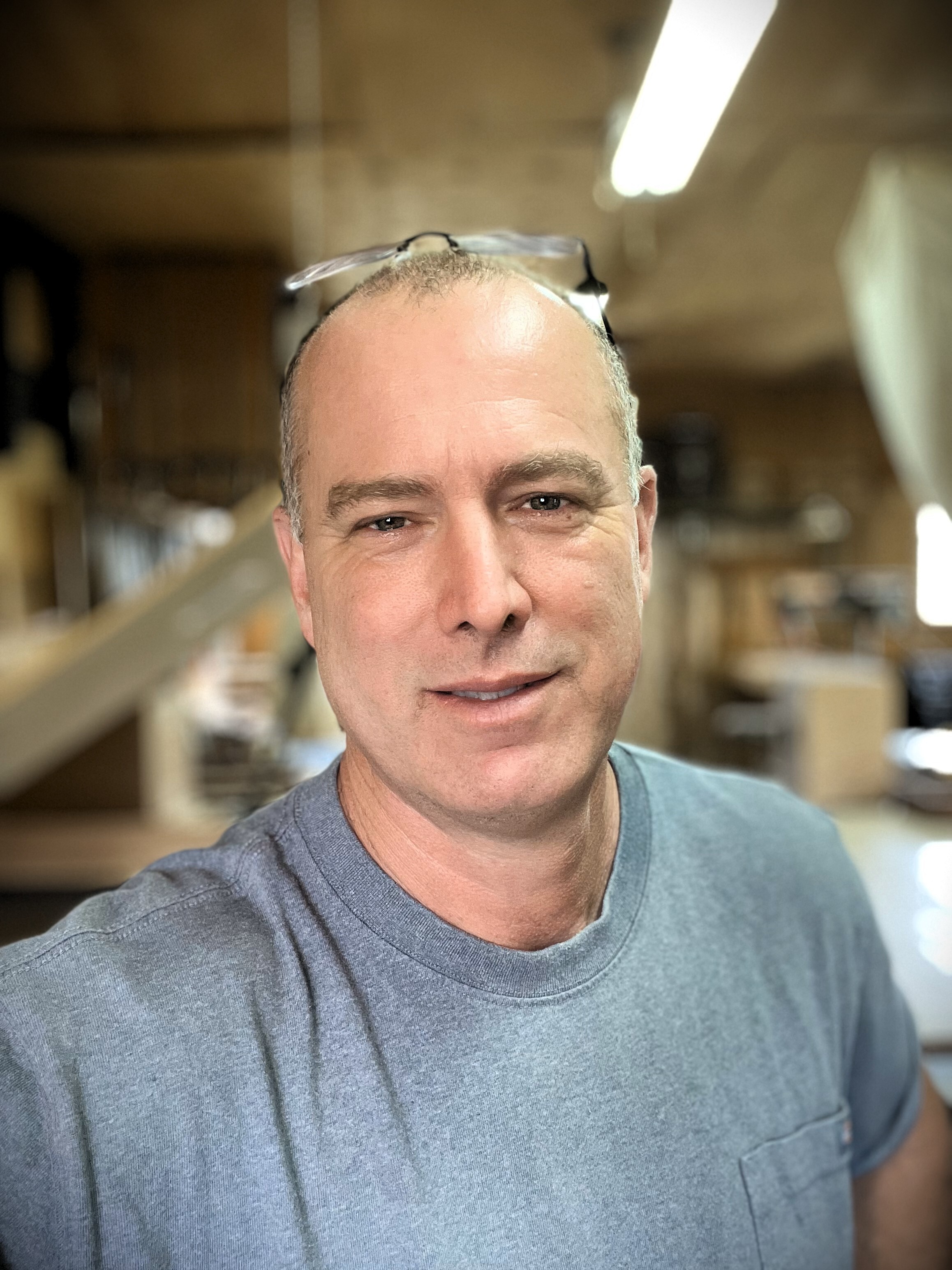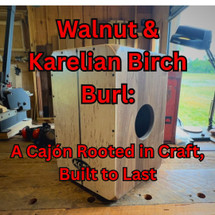Posted by Stephen Head on 22nd Apr 2025
Walnut & Karelian Birch Burl: A Cajón Rooted in Craft, Built to Last
Walnut & Karelian Birch Burl: A Cajón Rooted in Craft, Built to Last
American Tonewood Series Build
This week’s build is a piece I’m proud to share. It’s part of my American Tonewood Series—a project dedicated to showcasing the unique acoustic and visual qualities of North American hardwoods. The cajón drum I just completed features a solid walnut body joined with box joints and custom faceplates made from Karelian birch burl with an American birch core. It’s a build that brings together contrast, character, and craftsmanship.
Let me walk you through what went into it—starting with the raw materials and why I chose them.
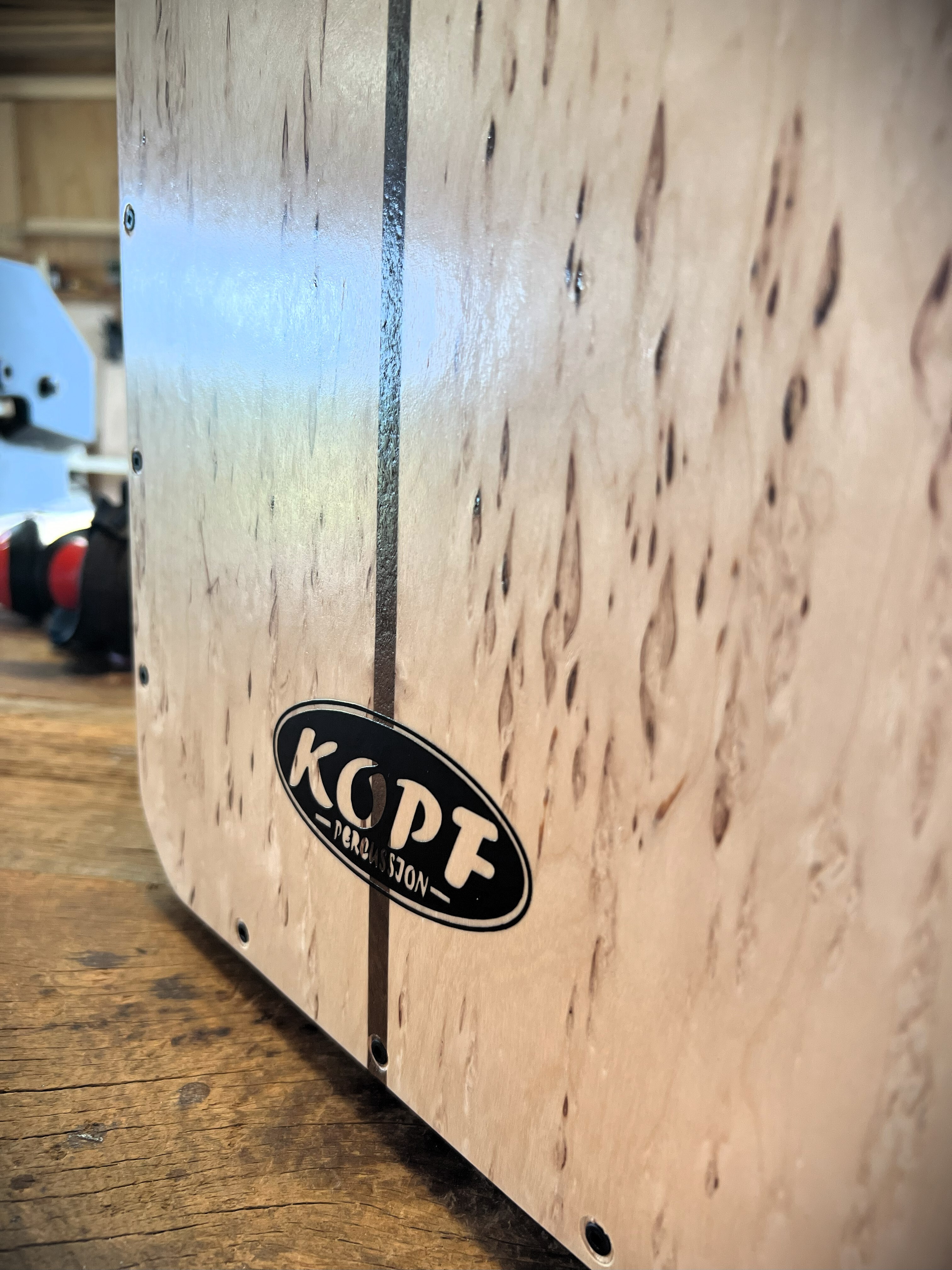
The Walnut Body
Black walnut (Juglans nigra) is one of the most respected hardwoods native to North America. Sourced primarily from the eastern United States, it’s known for its rich, dark heartwood and excellent dimensional stability. The tree itself can live well over a century, and its lumber is prized not just for its beauty, but also for its tonal properties.
Walnut produces a strong, focused bass response with balanced mids and a naturally smooth top end. It’s ideal for percussion instruments because it provides clarity without sharp overtones, allowing both slap tones and bass notes to stand out. Structurally, it’s incredibly stable—dense enough to hold up to heavy use but not so dense that it kills resonance.
This build features box joinery, which is not only visually appealing but also mechanically strong. Each corner interlocks like a puzzle, distributing stress across the joint and providing durability without the need for internal bracing. It’s a detail I use often in my work, both for strength and because it gives the drum a handcrafted, intentional look.
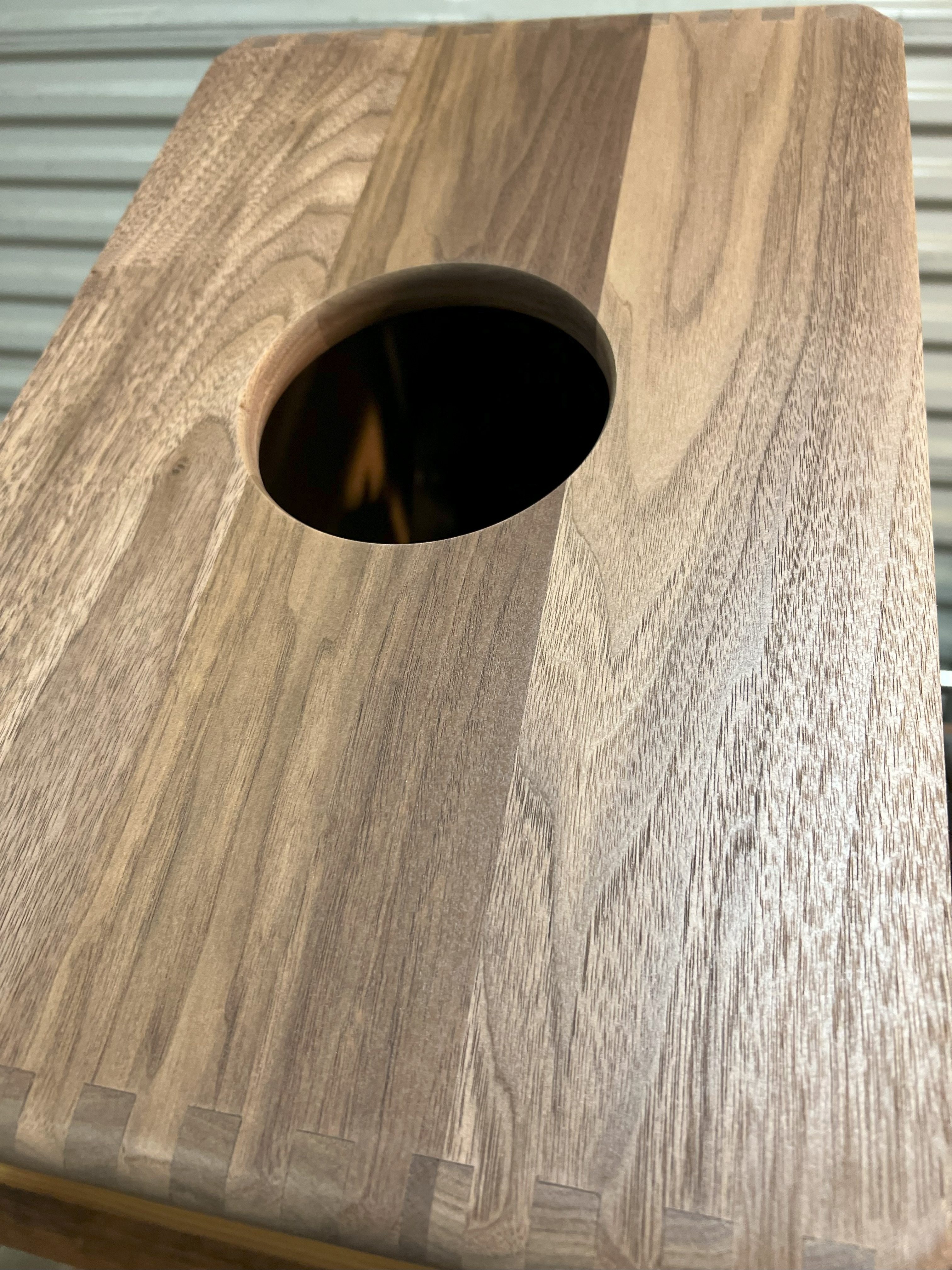
Karelian Birch Burl Faceplates
The faceplates are where the visual statement comes in. The outer layers are made from Karelian birch burl—a highly figured, naturally occurring anomaly found in silver birch trees (Betula pendula) that grow primarily in the Karelia region between Finland and Russia. These burls develop intricate, swirling grain patterns that make every cut of wood completely unique.
To give the faceplate both strength and performance, I build them as a three-ply panel with an American birch core sandwiched between two outer plies of Karelian birch burl. The American birch provides a consistent, stable foundation that keeps the faceplate responsive and structurally sound. The burl layers, with their higher density and striking figure, contribute crisp attack, visual depth, and a touch of added brightness.
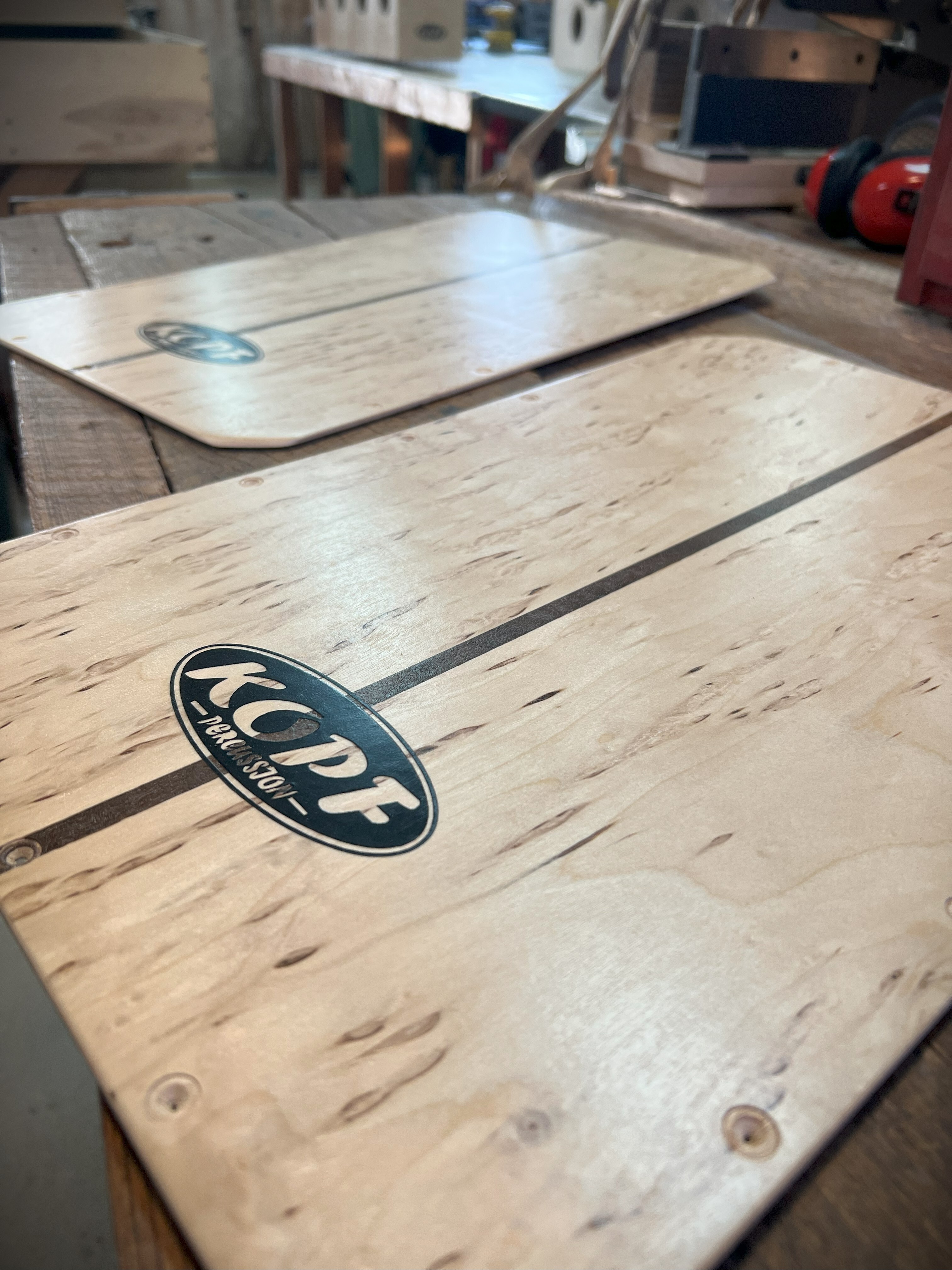
The Faceplate Process: Vacuum Press & Urea Resin
Building these faceplates is a careful process. I use a vacuum press to laminate the plies together. This method applies even, constant pressure across the entire panel, which is critical when working with thin veneers—especially burl, which can move unpredictably. Uneven pressure during gluing can lead to weak spots, voids, or warping. The vacuum press eliminates that risk.
For adhesive, I use urea resin glue. It cures extremely hard, stays stable over time, and won’t re-soften in heat or humidity. This makes it ideal for instruments, where vibration and climate changes can wreak havoc on inferior glues. With this combination of vacuum pressure and urea resin, I get a faceplate that is not only visually striking but acoustically responsive and structurally reliable.
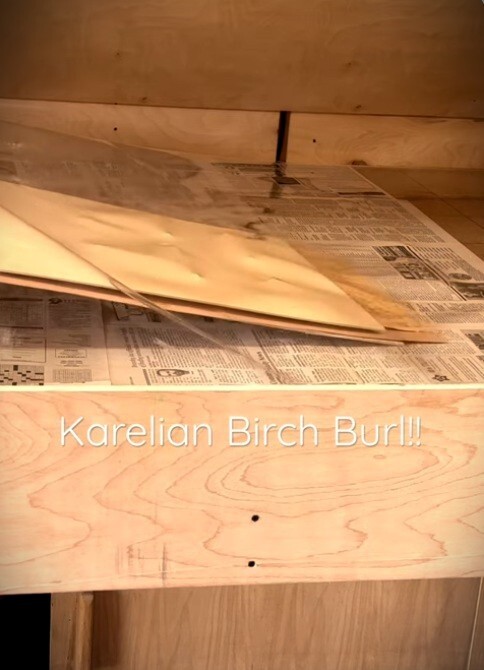
Why These Materials Work Together
This build is all about harmony in contrast. Walnut gives warmth and body, while the Karelian burl adds a snappy, articulate top end. Together, they create a cajón that’s balanced, expressive, and sonically versatile.
Visually, it’s just as dynamic. The satin finish I use on the exterior highlights the natural grain without turning it into a mirror. I don’t build drums to be flashy—I build them to be honest. A satin finish lets the wood speak for itself. It reveals the deep purples and browns in the walnut and the wild, marbled complexity of the burl without masking their natural feel.
On the inside, I seal the drum with shellac. It’s a traditional finish that serves a modern purpose—creating a moisture barrier that helps stabilize the internal environment of the cajón. Wood is always moving, reacting to the climate it's in. Sealing the interior is one of the steps I take to ensure this drum will hold its tone and structure for years to come.
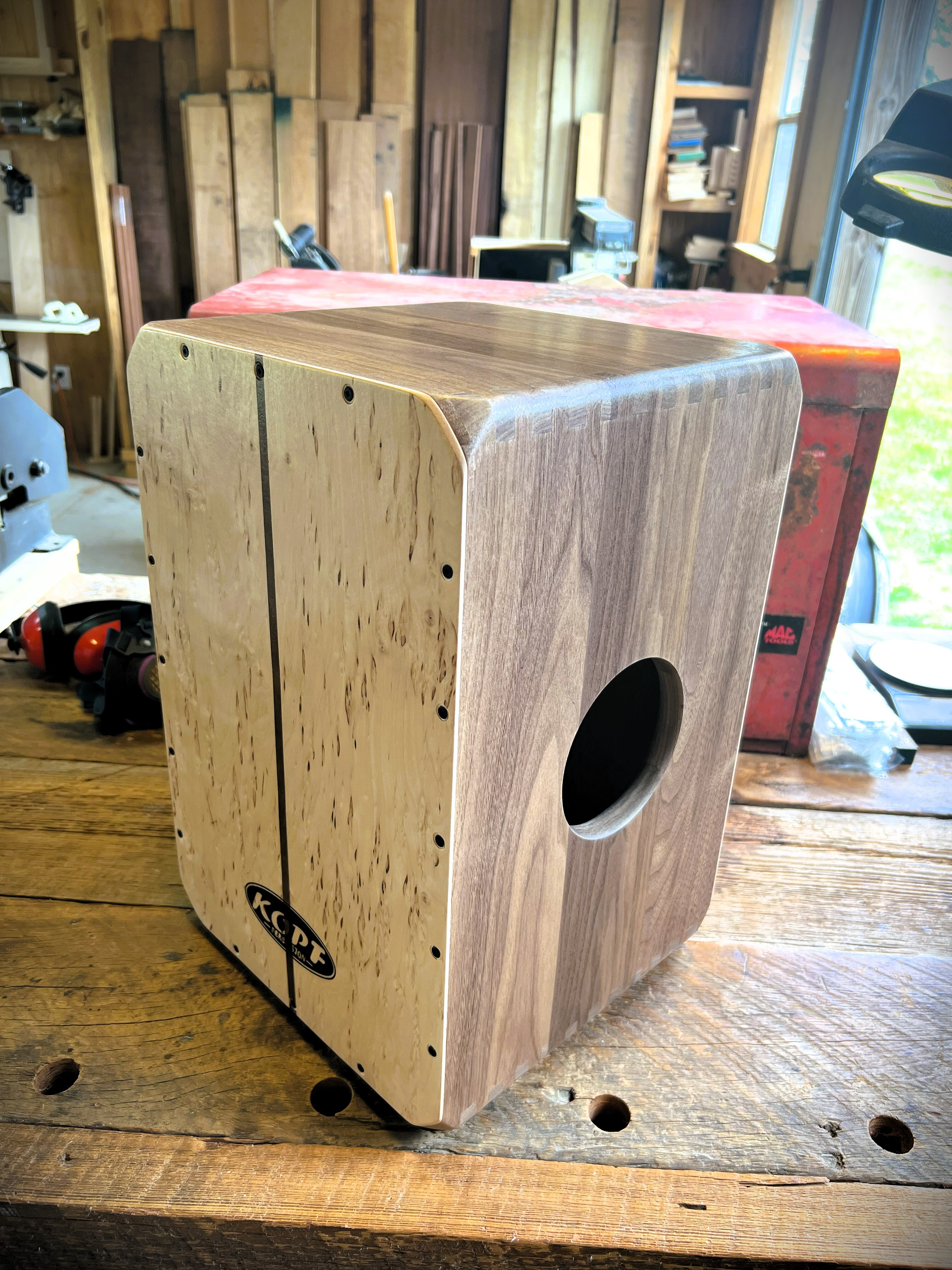
Personal Reflection
Every time I build one of these, I’m reminded of why I started doing this in the first place. It’s not about mass production. It’s not about perfection in the modern sense. It’s about respect—for the materials, for the process, and for the player. This drum, like all of mine, was made with intention. Not just to sound good, not just to look good, but to last. That’s what craftsmanship means to me.
